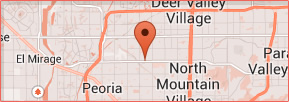From the Department of Emergency Medicine (Sklar, Crandall, Loeliger, Edmunds), and Department of Family and Community Medicine (Helitzer), School of Medicine, University of New Mexico; and the Office of the Medical Investigator, State of New Mexico (Paul), Albuquerque, NM.
INTRODUCTION
Background
Recent attention to medical error as a cause for preventable death has led to increased efforts in quality improvement and identification of medical errors. The emergency department (ED) has previously been identified as an area of high risk for medical error leading to death. Patients who are treated in an ED, sent home, and subsequently die could be victims of medical errors. Previous research on patients treated in the ED demonstrated that 13 per 100,000 died after ED discharge and 3 per 100,000 had an unexpected death that was directly related to the ED visit. In this previous study, the authors relied on identification of an ED visit within the medical examiner report. Ruptured aortic aneurysm was the most common finding of the unexpected related deaths in this series. The authors also did not attempt to determine whether errors had occurred.
Importance
Prospective data that measure the risk of death after an ED visit are lacking. Such deaths are important as part of a quality improvement process, as well as having importance with regard to medicolegal risk. Existing surveillance systems usually identify cases within their own network and may not identify these extremely important cases because patients may not return to the same ED or health care facility. These cases offer the opportunity to examine care for possible problems in the care provided that may have contributed to the death.
Goals of This Investigation
Our study used probabilistic data linkage to calculate a death rate after discharge and subsequently reviewed cases to determine whether the deaths were expected or unexpected according to their medical history, related or unrelated to the ED visit, and whether a possible error had occurred associated with the death. We used a qualitative data analytic technique called grounded theory to review the case material for unexpected and related cases to identify common themes or groupings from which more specific hypotheses might be generated for the current and future studies … read the full PDF article
Source: Annals of Emergency Medicine


